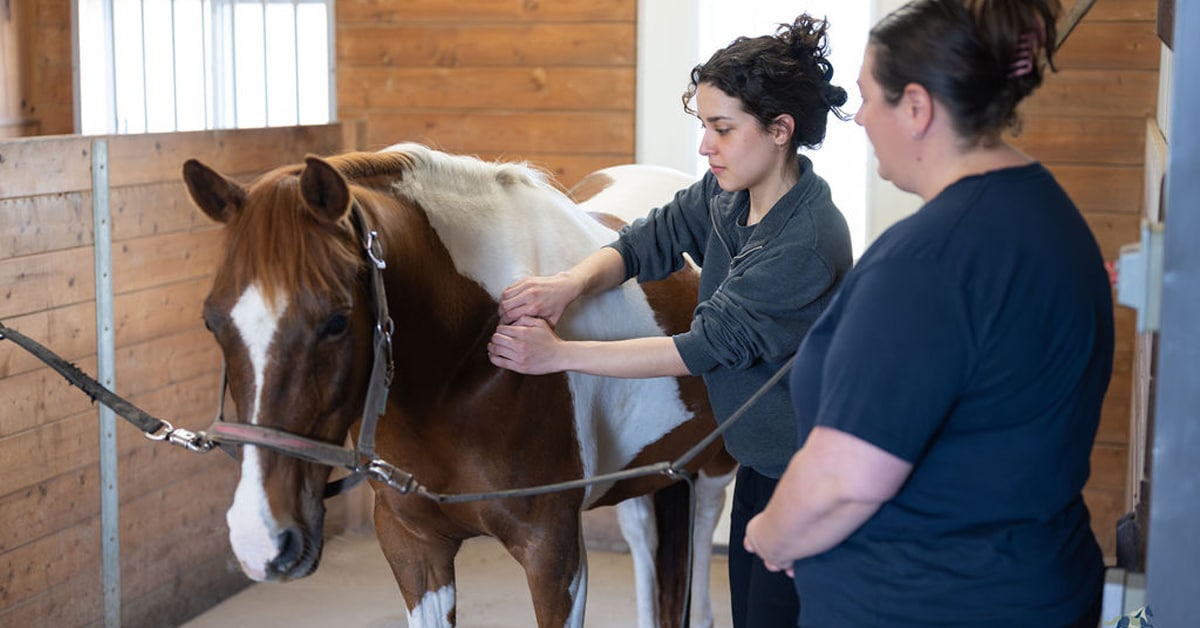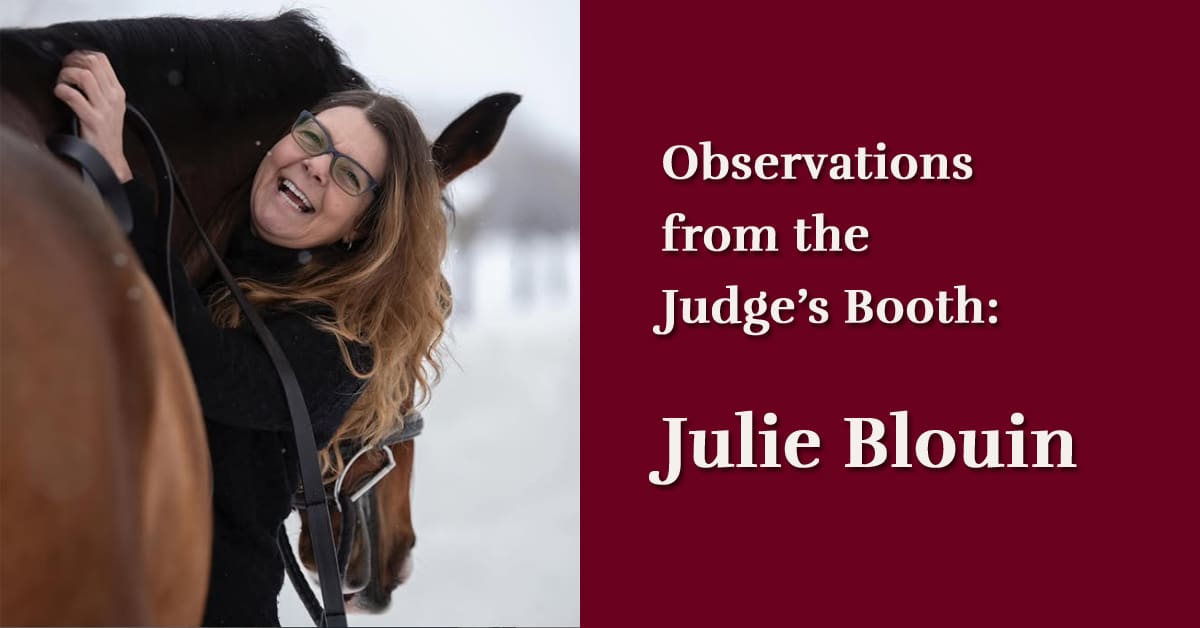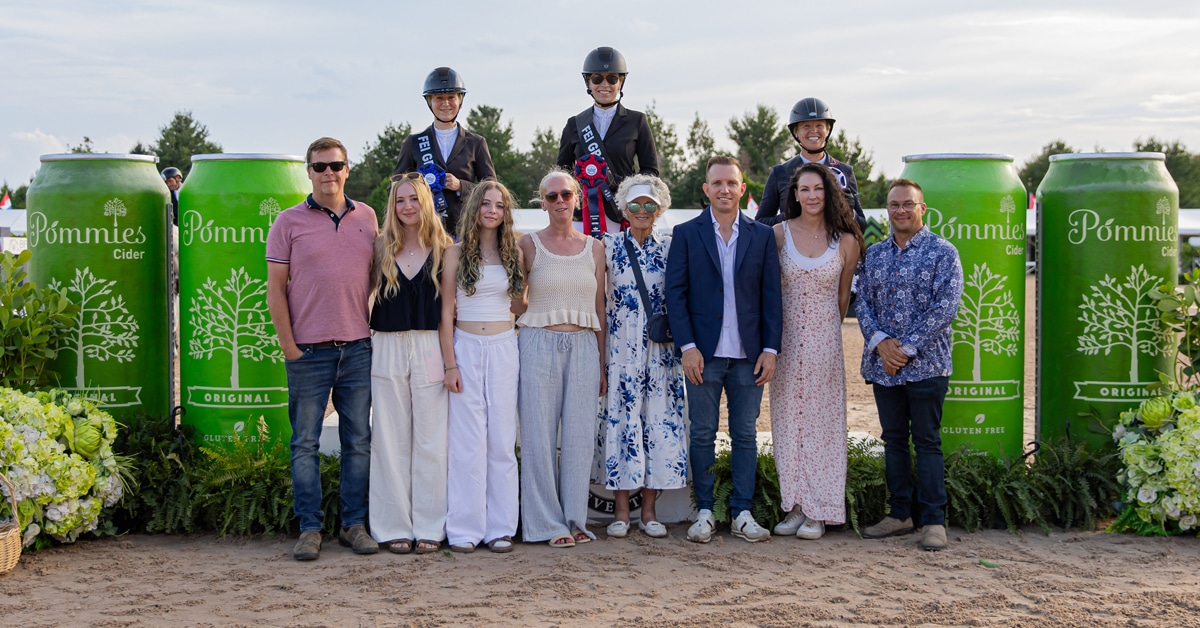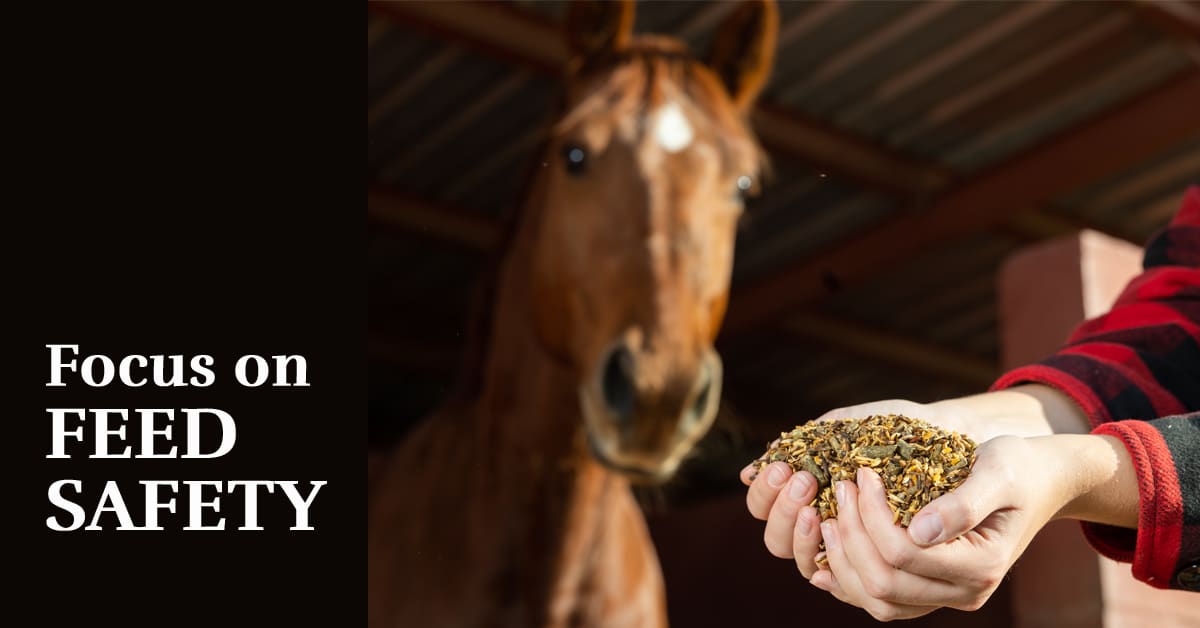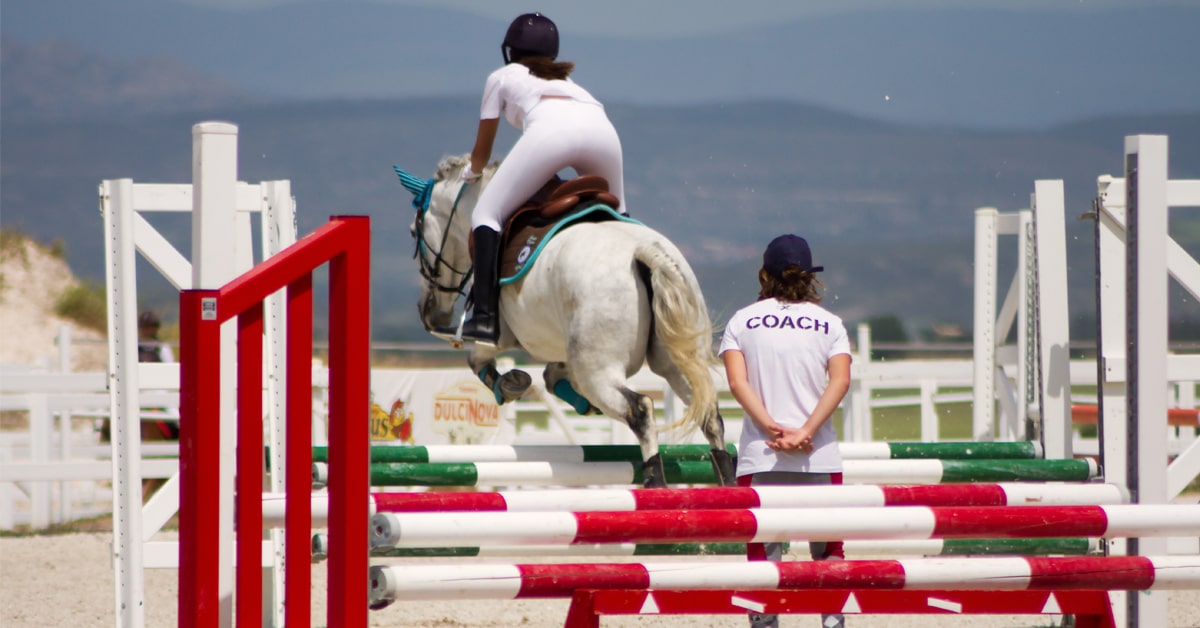After a successful career in the irons as an international rider (he won an individual gold medal and led his team to silver at the 1991 Pan American Games in Havana, Cuba), Danny Foster served as chef d’équipe for the Canadian Show Jumping Team at the 2002 World Equestrian Games and 2003 Pan Am Games.
He’s also a certified level III coach, but Foster’s current passion is for course designing. He holds “I” status with the FEI and designs courses at many top North American horse shows when he’s not home at Heritage Farms near Milton, ON, a training and sales facility that he owns and operates with Heather Boyko.
He says show jumping courses have changed dramatically since his days on the team, as have the riders and the type of horses in the sport. Here are his thoughts on the current trends in show jumping courses and tips for successfully negotiating them.
Not your grandpa’s courses
“There are two ways that modern courses have moved forward on the horse side and the rider side. The jumps are much more sophisticated, much airier than they used to be, and there is much more visually for the horse to discern. Materials are lighter and cups are shallower. Now every jump is related to the one before; they’re all related from the start line to the finish line.”
As far as the rider goes, the biggest change is in the level of technicality required and ability to control the horse. There are more related distances between jumps and the time allowed is much tighter in general. There is also more emphasis on the ride between the jumps. There is a greater demand on the rider’s ability to control, through direction and through the horse’s speed or length of stride.
Course designers are working very hard to have those elements become undone and can create problems that create a lack of balance and rhythm, which puts more jumps at jeopardy and more chances at creating faults. Most course designers are acutely aware of where problems originate.
While course design asks more technical questions of the horse and rider, on the flip side, trainers are more familiar with the modern sport. I think the level of training that most riders are exposed to is much higher than it used to be and lessons have become much more sophisticated. As well, the level of commitment of most riders to do their homework is greater than it has ever been. As the quality of horses and training has improved, along with a better work ethic among riders, it has forced course designers to push the level of questions asked to a higher level.
Show jumping is a fairly new sport and we’re still evolving, but we now have a crux of senior or very experienced participants such as trainers, show officials, and riders who have been part of the process of taking this sport to where it is now.
The Modern Show Jumper
The quality of horses being bred is consistently high now. You don’t see bad horses at the horse shows anymore. The breeders are the unsung heroes; it’s because they are providing us with horses that are so unbelievable that we can ask these questions. To me, that’s number one.
What’s interesting now is that everybody is riding the same kind of horse. Germany had big, heavy Warmbloods, we had Thoroughbreds, but everyone agrees on what a modern show jumping horse is now. You need horses with blood that can make the time, are quick to react, very adjustable, careful and with plenty of scope, and fast on their feet to win in jump-offs.
Get your hands on the best horse you can. Go to as many horse shows as you can for experience and try to secure the best training you can access. You need a good horse, a good rider, a good trainer and good horse shows to make the whole package.
The Course Designer’s Responsibility
The greatest challenge in modern course design is to understand the level of the horses and riders at a show. To me, every division at a horse show is a developmental division, including the grand prix. Unless we’re talking about places like Spruce Meadows and the World Equestrian Games, 90 per cent of grand prixs are still developmental divisions.
You always have a large percentage of young riders who are moving up, or young horses that are moving up. At “A” shows, horses and riders are hungry to advance themselves and you have to be sensitive to that. You may have 20 to 30 per cent of proven horses and riders, but the larger percentage of riders or horses are not.
As a course designer, you also have to be sensitive to the time of year. In a spring competition, horses and riders are just getting started and won’t be as far ahead as they will be in the fall. After all, a horse show is a competition as much as it is a place to learn and advance. A course designer has the mandate to try to assure to the best of his ability that the best entries have their chance to come out ahead. You have to provide those opportunities while being sensitive to the horses and riders just getting started at that level. Even if they don’t win, you want them to have a positive experience going forward.
When building courses for the major competitions such as Wellington or Spruce Meadows, the course designer doesn’t have to worry about protecting a group moving up. But with 80 to 90 per cent of grand prixs and junior amateur divisions, you are keenly aware you are a teacher in a sense, working with riders and trainers.
As a course designer, you test the horse with visual elements at the jumps, and you test their scope and their heart, mind and nimbleness. You test the rider’s ability to control their horse around a course, and that the horse is well trained and the rider understands all about rhythm and balance.
The course designer’s job is also to cause a loss of direction, an inappropriate change of speed, a lack of control somewhere, or to expose a lack of training in the horse that will jeopardize the fences. But while it seems like a case of the course designer against the competitor, we’re still very much on the same team.
Between the Jumps
The time alloweds have been come such a factor that there is an increasing onus on the rider to ride well between the jumps. The biggest thing I teach in clinics is that jump riders are not really jump riders – they are riders on the flat. A rider’s job is to present the fence in the best rhythm, the best balance, and as straight as possible to afford the horse his best opportunity to jump.
The most important thing is controlling direction and understanding the pattern of the course. Where are the turns? Where do I turn left, turn right, ride straight lines, bending lines? If you removed the jumps and drew the pattern on paper or in the dirt in the ring, can the rider ride that pattern?
If you are too fast or slow, you can still make something happen, but you put the jump in jeopardy. You want to lengthen in forward distances, be steady in the short lines between jumps and be able to carry rhythm around turns. If you have a tall vertical coming off a turn versus a jump that’s wide, such as a triple bar, you may be following the same direction, but operating off a completely different length of stride.
If you go to top horse shows and watch any group of riders, you can tell the great riders by their positions and ability to ride on the flat. Position and balance on a horse is huge to me and very often neglected. Good riding comes from control of the body, influence of the weight and seat. The hand is overdone at the lower levels and should only be used to create balance of stride or to indicate direction.
Rhythm and balance go hand-in-hand with the quality of the horse. This may be difficult if the horse has a bad mouth, doesn’t turn well one way or the other, gets strong and won’t come back easily between jumps, or is negligent about moving forward when asked.
We all get caught up in the jumps; the jumps are the easiest part. If you’ve got a good, wise jumper who is well-schooled he will look after himself. Your job is to get him there.
A Fair Test
Course designers will set tests through direction such as coming on and off the rail, jumping off turns, or asking for constant changes in rhythm – a little up, to a little back, to a little up.
Another weapon they have is the time allowed. When building a course for Beth Underhill, Ian Millar and Eric Lamaze, it’s difficult to get those riders to come undone, as they have spent years practicing their craft.
Modern jump riders want their skills tested, as long as the horse and rider are being tested fairly. What’s fair is whether the test suits the level. There are so many shows now and horses and riders compete regularly, so a course designer has to be sensitive to that. Horses aren’t disposable items and you have to keep them confident and fresh.
When you talk about the size of a jump, it tests scope, courage and power and size should be only used as much as every other question, and no more.
The Thinking Rider ’s Course Walk
From the moment you step through the in-gate for the course walk, there is a lot more you should be doing during those precious few minutes in the ring than measuring striding between the jumps. Foster advises riders to also take note of the following important factors:
- Don’t just walk the jumps; walk the parts between the jumps. Visualize the pattern and walk the approaches to see how they are related to the jump before them. • Don’t walk too quickly – you may miss some vital details, such as a shortcut, placement of ring decorations or a tricky approach. • Don’t walk too lethargically, as you will lose the “flow” of the course. • Take note of where the crowd is, the VIP tent, the judge’s booth, etc., as they may draw your horse’s attention away from you or cause visual clutter behind a jump. • The position of the in-gate is vital. The course designer may have placed something a bit spooky as a test of courage going away from the gate. “You have to ride six times harder going away from the gate than toward it,” says Foster. • Pay attention to the slope of the ring and the footing, not just in front of the jumps, but in the corners and turns as well. It it deep and heavy? Light and springy? Both can affect how your horse travels across the ground. • Note the weather conditions and the position of the sun, which may change significantly by the time you ride. While a course designer would never intentionally place a jump so that you’re jumping directly into the sun, it is unavoidable that it might be in your eyes at some point in the course. • Your class is not the only one at the show – watch some of the other classes, preferably with your trainer, so you can break down what you’re seeing into lessons. Says Foster, “A great trainer told me once: “you can ride for only so many minutes a day in the ring, but you can watch all day long.” We often have great riders riding right in front of us and we’re not paying attention. And it’s free!”
Horses and riders should show in the division they belong so they aren’t in over their head. As a trainer, I try to nudge horses and riders up, to always have goals. I like horses that are a level ahead of the rider so the rider can learn from them. People at “A” shows are very goal-oriented. When you go into a division and are low man on the totem pole, that’s where the learning comes from. This is where progress is made; it’s not about being complacent – it’s about constantly looking for new goals.
Homework pays off
When a rider and trainer show up at a horse show, they shouldn’t be discussing whether they are capable of dealing with certain problems. It comes down to the quality of work they’ve done at home. At home, you want to show your horses all the natural obstacles, liverpools and water jumps from a young age and make them familiar with the look of modern jumps.
Combinations are one-stride or two-stride lines that can be forward, or steady and holding. You need to teach horses to jump a lot of gymnastics and to be comfortable with one- and two-stride lines. You need to spread out distances between fences so you’re adding and subtracting strides. Do lots of work over small jumps, using intricate patterns similar to a show jumping course.
There are three components to a jump: the approach, the jump itself and the landing side. You need to practice approaches and remember that each landing side becomes the approach to the next jump. And get off the rail; jumps are never on the rail. The rail is for beginners.
Once you are starting to jump and understand how to do it, jump inside of the ring. Go visit the rail, but don’t live there.
The show itself is a place to test how your work at home is going. Even losing can be a learning experience. What do you have to work on? Go to a horse show and see what your weak areas are. Don’t look at each show as an end itself, but as part of the process.
A healthy balance
I really love the way the sport is going, and even if it stayed this way I would be delighted. There’s more concern for the welfare of the horse lately – we don’t just jump the guts out of them. We’ve taken it to a science; I love how the sport has become like every other modern sport and is technically driven. It had to evolve this way, because we compete way more often than we used to. Juniors, amateurs, they all want to show a lot.
For the big guys there’s so much money around, so many big classes now, that the course designer has to be very skilful in making sure he gets good winners without overusing the horses. We used to go to the Olympic Games and the horse got the rest of the year off to recover. Now they go to the Olympics and two weeks later they’re at the next horse show. We preserve the horses better and create better sport at the same time.”
The Latest
